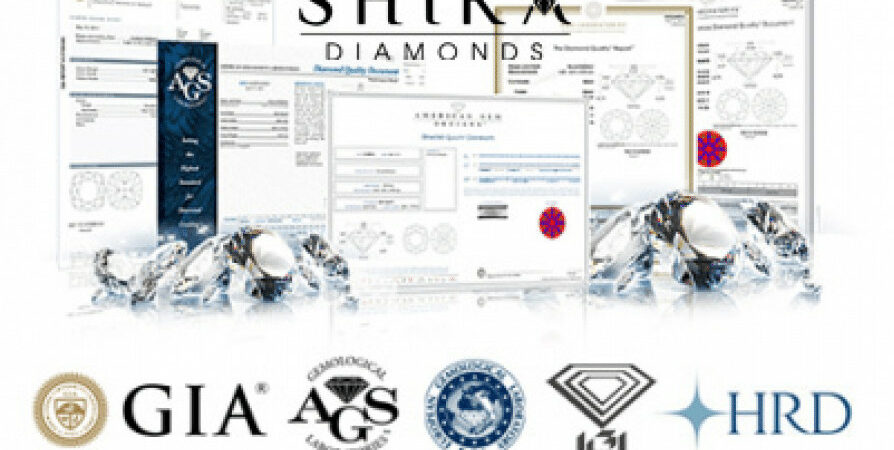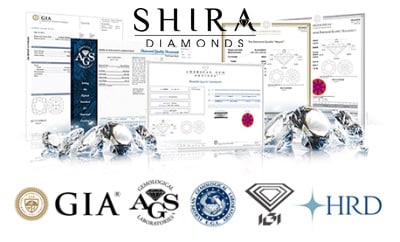Loose Diamonds GIA Certified
-
Shira-Diamonds
-
0 Comment
Loose Diamonds GIA Certified
Established in 1931, GIA is the world’s largest and most respected nonprofit institute of gemological research and learning. Because diamonds are so valuable, GIA believes it is essential for industry professionals to have a universal grading system when comparing diamond quality. It is out of this need that in the mid-twentieth century, GIA developed the International Diamond Grading Systemú and the 4Cs as a way to objectively compare and evaluate diamonds.
GIA discovers (through GIA Research), imparts (through GIA Education), and applies (through the GIA laboratory and GIA Instruments) gemological knowledge to the public. With 1,200 employees, the Institute’s scientists, diamond graders, and educators are regarded as the world’s foremost authorities in gemology.
Internationally, the Institute has distinguished itself as the preeminent source of gemological knowledge and professionalism. The GIA Diamond Grading Report and the GIA Diamond Dossier® are considered to be the world’s premier credentials of diamond quality. Many retailers provide diamond certification, however no report is as unbiased and complete as a GIA diamond grading report. Diamonds of all shapes and sizes are sent to the Institute from every corner of the globe for diamond grading and analysis.
Some famous diamonds have been graded by GIA including the Hope Diamond (45.52 carats), the Steinmetz Pink (59.60 carats), the Taylor-Burton (69.42 carats), the Allnatt (101.29 carats), the De Beers Millennium Star (203.04 carats), the Centenary (273.85 carats), and the Incomparable (407.48 carats).
Today, GIA’s D-Z color-grading scale, Flawless-I3 clarity-grading scale and Excellent-to-Poor cut-grading scale are recognized by virtually every professional jeweler and savvy diamond buyer in the world.
GEMOLOGICAL INSTITUTE OF AMERICA (GIA)
An independent nonprofit organization, the Gemological Institute of America (GIA) is renowned for its impartial service as the world’s foremost authority in gemology. The Institute’s history of ground-breaking scientific research, education, and gemological laboratory services reads as a virtual chronicle of the industry’s own growth and sophistication.
From 1953, when Richard T. Liddicoat created and introduced the International Diamond Grading System™ – to the position the Institute holds today as the most respected grading and identification authority in the world – GIA has combined the principles of research, education, and service to help gem and jewelry professionals around the globe use science and product knowledge to sustain the public’s trust.
The GIA can be reached at:
Gemological Institute of America (GIA) World Headquarters The Robert Mouawad Campus 5345 Armada Drive Carlsbad, California 92008 Telephone: (800) 421-7250 or (760) 603-4000 E-mail: ghill@gia.edu
Before you go shopping for a diamond and spending a lot of your time and money on the perfect diamond, it’s important to know why you should buy a certified diamond instead of a non-certified diamond. And if you’re new to the whole diamond-industry jargon in general, first we’ll tell you the difference between the two.
As an easy description, a certified diamond is an assurance that the diamond you are buying is as described by the jeweler. This is different than just knowing the 4 C’s of diamond buying, which we’ll explore in another article. You could call the certification a blueprint or an X-Ray of the interior and exterior characteristics of the diamond. It identifies the exact weight (right to the point), shape (round, marquise, etc.), cut, clarity, color and other facets, such as polish and symmetry of the diamond.
If deciphering all of these things sounds more complicated than launching a rocket to the moon, fear not. The Diamond Buying School makes it easy for even the average person to make sense of all these diamond terms.
The purpose of a diamond certification
Buying from a reputable jeweler is the best way to ensure peace of mind that you will be getting what you pay for. Reputable jewelry stores all have certified diamonds in stock and are supposed to show you the certification even before purchasing. You can ask to see it and have the salesperson explain what each of the characteristics of the diamond mean.
For example, many people commonly mistake diamond traits to be “flaws” when in fact, they are not. Every diamond on earth has features which make up the gemstone. Some are clear and some can be seen with the naked eye. A “flawless” diamond is about as rare as finding an Evergreen tree on the middle of an iceberg, although maybe that analogy is too extreme. Your likeliness of coming upon a flawless diamond is marginal. In general, there may be an accepted allowance of characteristics that you are willing to live with, and that’s not such a bad thing.
Consider this. You’ve chosen the right person, but that person isn’t perfect. He or she has a few personality quirks that you are willing to accept and live with. A diamond is much the same.
Qualified diamond certifications
There are some widely accepted diamond certification companies throughout the U.S. and the world. The four most commonly known big ones are:
(GIA) Gemological Institute of America: GIA certified diamonds are recognized worldwide as the industry experts in diamond. GIA has over 75 years in service. In addition to their labs, research and education centers, they are considered the godfathers of diamond certification and the original “inventors” of the concept of certified diamonds. One advantage of buying a GIA certified diamond is that in doing so, you can trust that it will be of the highest quality. They also commonly provide more detail on their diamond certifications.
(IGI) International Gemological Institution: Although not as strict as GIA, IGI are less pricey and very comparable in value.
(EGL) European Gemological Laboratory: EGL diamonds are evaluated by two labs (minimum) and use a subjective method of grading. Like IGI diamonds, these diamonds may be lower priced than GIA certified diamonds.
(AGS) American Gem Society: Unlike the aforementioned two, AGS diamonds may be even more stringent than GIA. They offer thorough detail, including a hand plotted illustration of every external and internal blemish or inclusion. Because of their underlying theory, AGS diamonds are most known for their association with grading ideal cut diamonds, which are diamonds specifically cut for brilliance. Many people don’t know that AGS was founded by the very same man who formed GIA, Robert Shipley.
It should be noted that a diamond appraisal and diamond certification are not one in the same. An appraisal is done by an independent appraiser and evaluates the current market value of a diamond. A diamond certification, rather, is an assessment of a diamond that is typically done prior to its release to the marketplace. A certification is performed by a laboratory and places emphasis on the quality, whereas an appraisal places emphasis on the diamond’s value.
Why should I buy a certified diamond?
No matter which of these four certifications you choose that’s right for you, the most important thing to remember is that buying a certified diamond is the only true way to know that what the diamond salesperson tells you is 100%. It’s like having a stamp of authenticity that also makes your diamond more valuable.
Buying a non-certified diamond is like buying a used car without a CarFax, you just can’t be sure that the history or current value of the car is authentic until you have the paperwork in hand. A certified diamond gives you much the same piece of mind.














